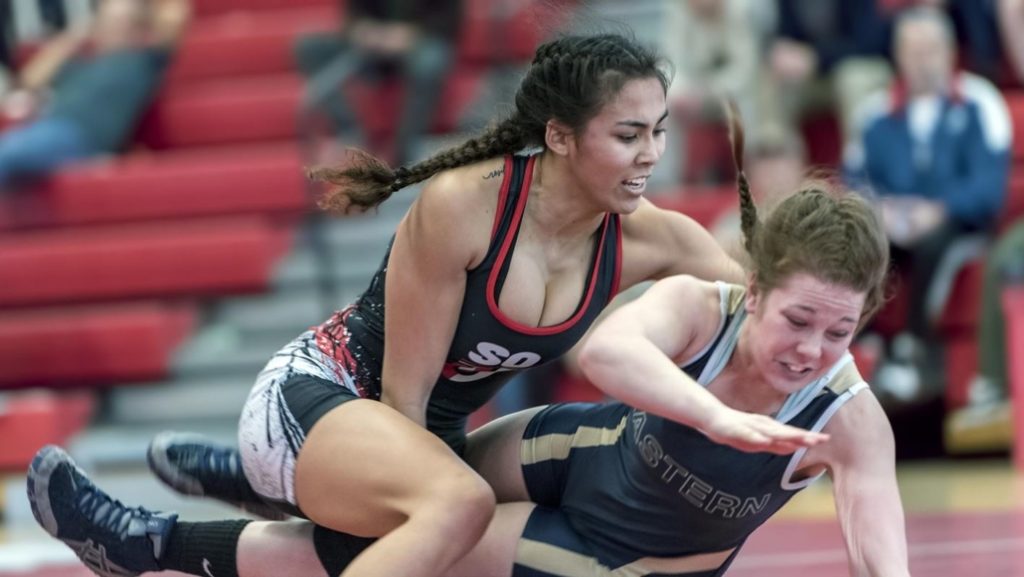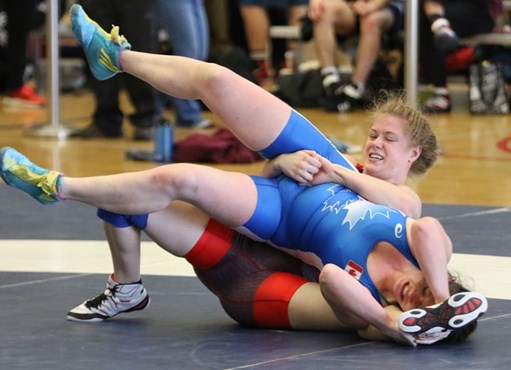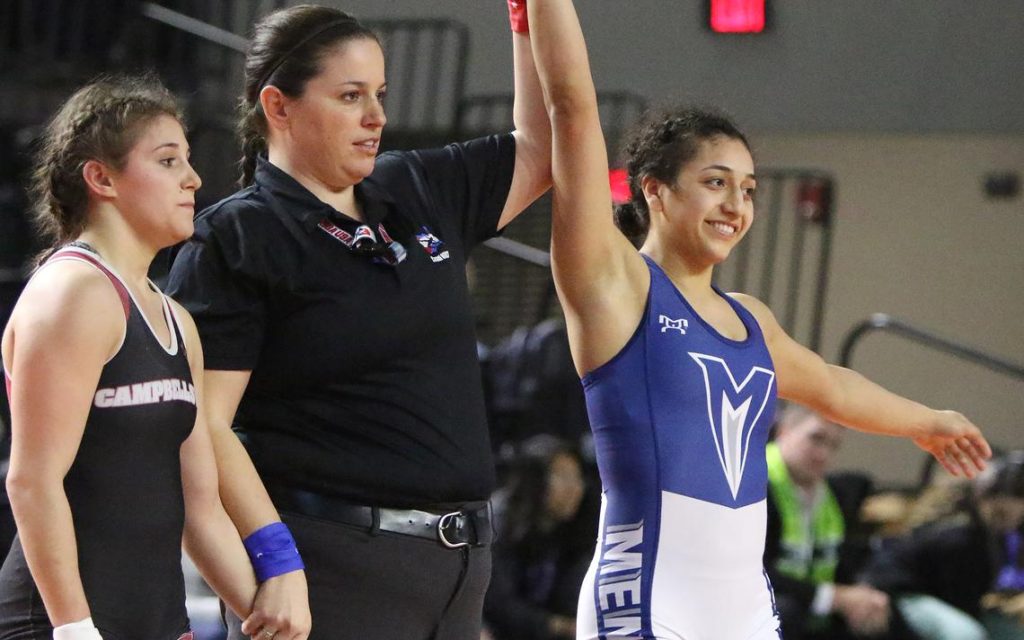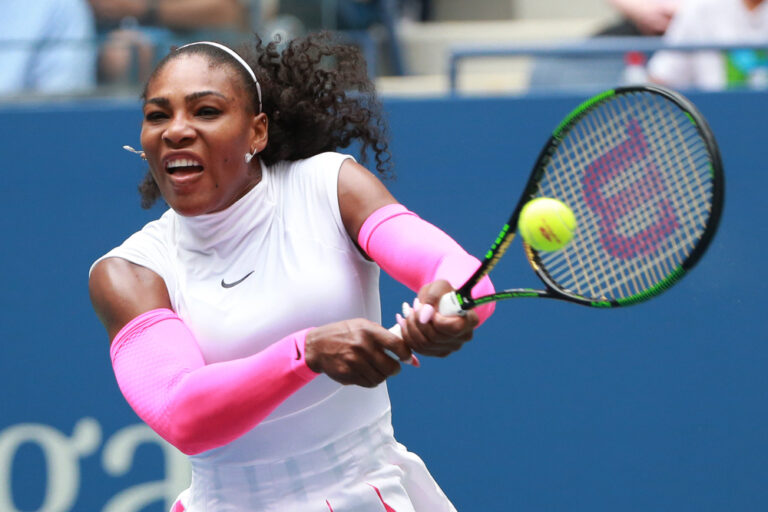
March 24, 2020,
There truly is a pot of gold at the end of the rainbow if you are a serious and very competitive female grappler in high school.
The NCAA is considering adding Women’s Wrestling as an emerging sport.
As reported January 25, 2020 at teamusa.org, “Two different NCAA Divisions, NCAA Division II and NCAA Division III, voted to approve women’s wrestling as an Emerging Sport during the NCAA Convention in Anaheim, Calif. today.
The vote was the latest major step forward for women’s college wrestling, which is growing rapidly and gaining momentum all across the United States.”
This is also a major step towards female grapplers earning scholarships in numbers never seen before.

We know the sport is growing in unprecedented numbers but if the NCAA comes on board, the numbers will truly explode.
At their informative website ncaa.org their leadership educates, “The NCAA Committee on Women’s Athletics is charged with identifying and managing progress of emerging sports for women. An emerging sport is a women’s sport recognized by the NCAA that is intended to help schools provide more athletics opportunities for women and more sport-sponsorship options for the institutions, and also help that sport achieve NCAA championship status.
When the NCAA adopted the recommendations of the Gender Equity Task Force in 1994, one of the recommendations was the creation of the list of emerging sports for women.”
Our hope is that movement keeps propelling forward. The stakes and costs are high.
As reported by topuniversities.com, “In HSBC’s 2018 report, The Value of Education, the US again emerged among the top choices for parents considering university abroad for their child – but also one of the most expensive, with students spending an average of US$99,417 over the course of their degree.
According to College Board, published tuition fees for 2018/19 at state colleges are an average of US$10,230 for state residents, and $26,290 for everyone else. This compares to an average of $35,830 at private non-profit colleges.”
As you can surmise, an NCAA scholarship would be the equivalent to a pot of gold.

The NCAA website shares that full scholarships cover tuition and fees, room, board and course-related books. Most student-athletes who receive athletics scholarships receive an amount covering a portion of these costs. Many student-athletes also benefit from academic scholarships, NCAA financial aid programs such as the NCAA Division I Student-Athlete Opportunity Fund and need-based aid such as Federal Pell Grants.
Division I schools may provide student-athletes with multiyear scholarships. Additionally, Division I schools may pay for student-athletes to finish their bachelor’s or master’s degrees after they finish playing NCAA sports.
Be optimistic but please keep in mind that they are extremely hard to get.
The team at cbsnews.com shares, “The odds of winning a NCAA sports scholarship are miniscule. Only about 2 percent of high school athletes win sports scholarships every year at NCAA colleges and universities. Yes, the odds are that dismal. For those who do snag one, the average scholarship is less than $11,000.”
Well, at least it is a start. The goal for a female grappler is to get a full ride scholarship.
The group at debt.org enlightened, “Every year, millions of parents pay to place their children in youth sports programs in hopes the child eventually will develop the skills need to earn a coveted athletic scholarship that pays for college.
The NCAA has some sobering news for those parents: just over 1% of high school athletes (1.3%, according to statistics from the NCAA) receive full or partial athletic scholarships. And just as important, those scholarships are not guaranteed for four years.
That means that if your child joined a youth sports club with 100 members, it’s likely only one of them will be good enough to get an athletic scholarship.”
We didn’t say obtaining a scholarship would be easy but being designated as an emerging sport can help tremendously.
CBS News adds that there are only six sports where all the scholarships are full ride. These so-called head-count sports are football, men and women’s basketball, and women’s gymnastics, volleyball, and tennis. In these Division I sports, athletes receive a full ride or no ride.
Beyond the head-count sports, all other sports are considered “equivalency” sports.
In terms of their commitment to awarding scholarships the NCAA shares, “As part of its commitment to providing a pathway to opportunity, the NCAA awards scholarships and grants for further education to college athletes who demonstrate outstanding academic and athletic achievement. Colleges and universities are also awarded grants to improve academics and enhance campus culture – all to support student-athletes.
In addition to the nearly $3.5 billion schools award in athletics scholarships each year, the NCAA funds more than $10 million in scholarships and grants annually to graduate student-athletes and member schools.”
FBS programs are allowed 85 scholarships on its roster at any given time, and generally can sign up to 25 players per year.
Women’s wrestling teams tend to be much smaller than that figure which means virtually every girl on the team can earn a scholarship.
Girls wrestling has swelled over the years and an exceptional female high school wrestler is in demand.
On August 26, 2019 USA Wrestling educated, “The National Federation of State High School Associations (NFHS) has released its 2018-19 High School Participation Survey, and the sport of wrestling has grown in all five categories reported.
The biggest jump within wrestling came in girls wrestling, which grew for its 30th straight year. The number of schools with girls wrestling climbed to 2,890, an increase of 539 schools. This marks a 22.9% increase from the previous year.”
Female Competition International (FCI) has been publishing since 2012 and we can attest to that incredible growth.
Of course we don’t want to lose sight that the main reason why a female grappler should desire to go to college is to indeed get a college education. That is very consistent with the NCAA’s thinking.
They summarize, “Only about two-percent of high school athletes are awarded athletics scholarships to compete in college. Of the student-athletes participating in sports with professional leagues, very few become professional athletes. A college education is the most rewarding benefit of the student-athlete experience.”
We completely agree.

~ ~ ~
Opening photo fciwomenswrestling.com femcompetitor.com, fcielitecompetitor.com, grapplingstars.com Canada-Lutte-photo.
http://www.ncaa.org/about/resources/inclusion/emerging-sports-women
https://www.topuniversities.com/student-info/student-finance/how-much-does-it-cost-study-us
https://www.ncaa.org/about/resources/ncaa-scholarships-and-grants
https://www.cbsnews.com/news/8-things-you-should-know-about-sports-scholarships/
https://fciwomenswrestling2.com/2019/11/19/female-grappling-considered-as-ncaa-emerging-sport/
https://www.debt.org/students/athletic-scholarships/
http://www.ncaa.org/student-athletes/future/scholarships
https://fciwomenswrestling.com/



